THE ONGOING PROJECT OF REMOVING THE BURNING BUSH (EUONYMUS ALATUS) FROM MORRIS PARK CONTINUES. WE OFFER YOU A FEW TIPS ON ITS REMOVAL, AND A QUICK LESSON ON TELLING THE DIFFERENCE BETWEEN THE NATIVE HEARTS-A-BUSTIN’ (EUONYMOUS AMERICANA) AND THE INVASIVE BURNING BUSH.
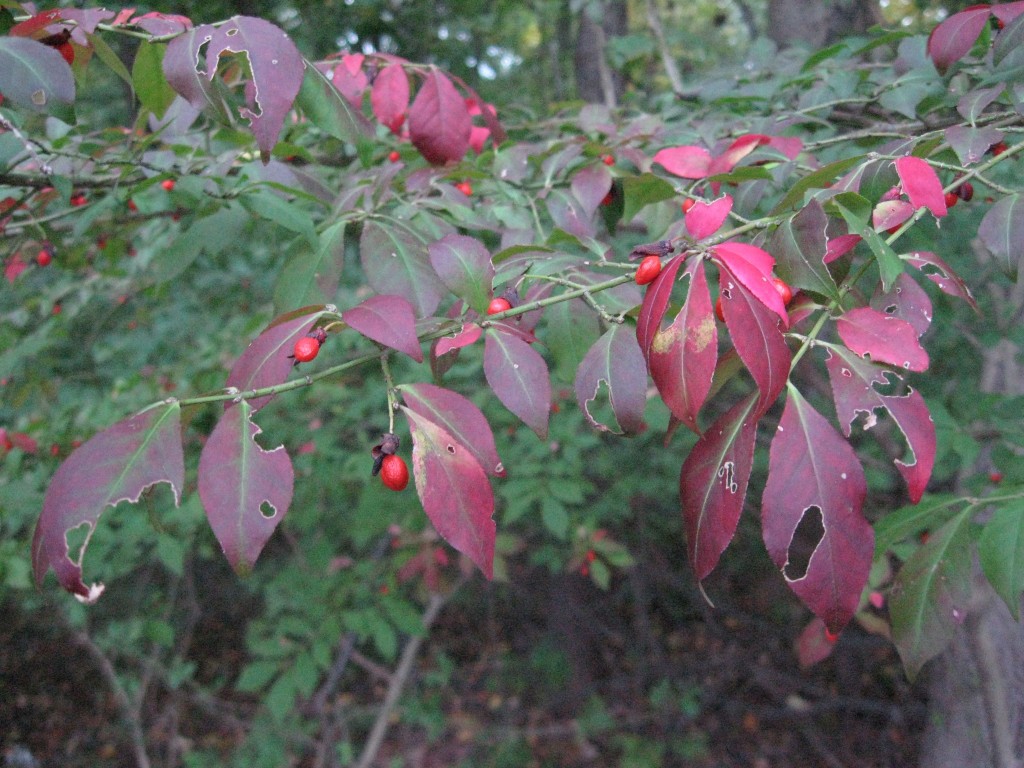
(Euonymus alatus)
This bush gets its common name from the bright red foliage in the fall. It was a favorite for landscapers for too long, and can be found on foundation plantings next to commercial buildings and alongside roads and parking lots. It has spread into the adjacent forests, and here it is in Morris Park.
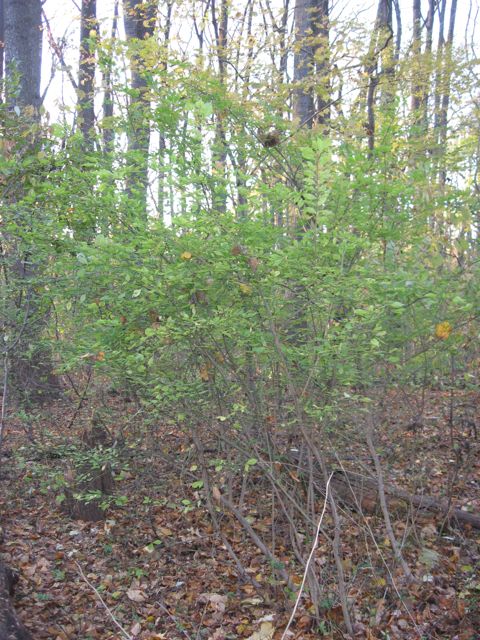
Here is a clump of this species growing in the park. It is extremely shade tolerant, and when leafed out, will shade out the herbaceous layer of the forest, leaving a barren area below it. It seeds itself prolifically, creating a problematic situation, as the forest becomes less and less of  itself and more and more about this messy alien shrub. Habitat for species -specific insects is lost, and with the diminished insects, the birds we love to have in our park are also diminished.
So now, removal is the best thing that can be done. It is a great cardiovascular exercise, and a good excuse to be outside, doing something useful for your neighboring forest. Â We will help you identify them and remove them.
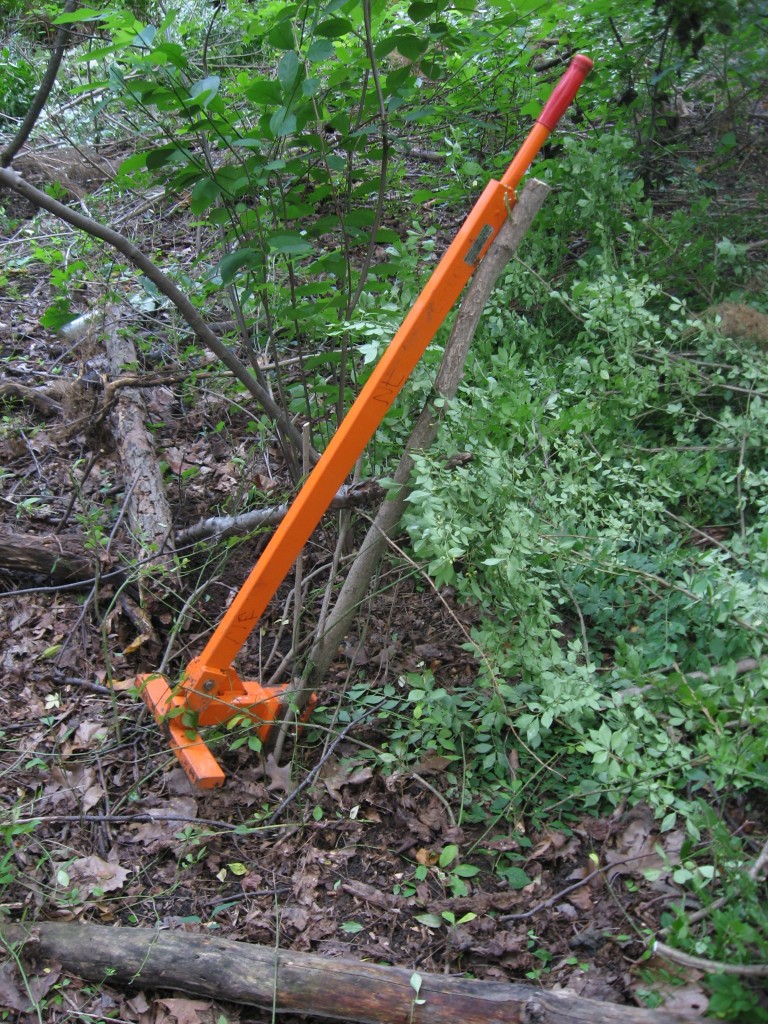
The most tell-tale give-away is the corky winged branches of this simple-leaved shrub. The wings occur at 90 degree angles to each other and are a very prominent feature. The red fall color and the bright red berries are also distinguishing.
We mechanically remove the bush with a large steel weed wrench supplied to us by the friendly and knowledgable staff of the Philadelphia Parks and Rec department. We bought our own saws and clippers and cut out most of the bushes mass, leaving a three foot stump. Â That way it is easier to pull out the roots, without brushing up against the plant and having it get in our faces as we wrestle with it, exposing us to ticks. Â Wear your socks over your light colored pants and inspect yourself and wash your clothes and take a shower after this work day! Â The conditions in a forest that would have a Burning bush infestation are also likely to have a deer and disease-carrying tick infestation.
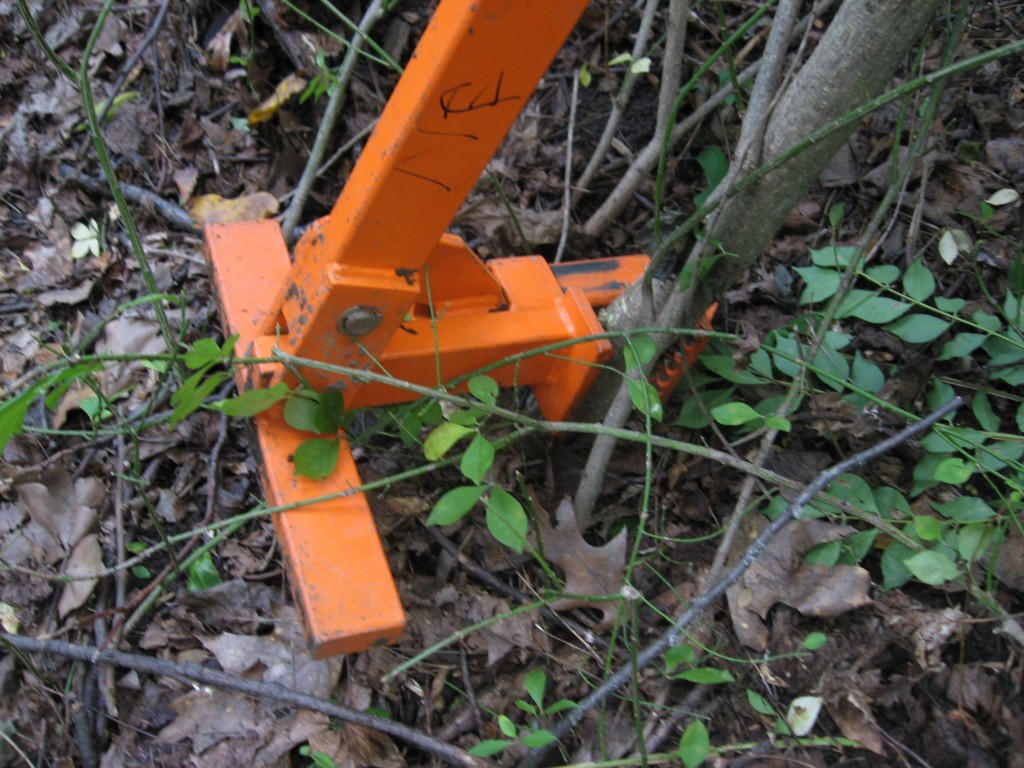
This great tool makes it easy to pull out the roots. This process is dirty, as the soil is spread all over as the root is unearthed. If we do not do this, and just cut the bush down, it will re-grow again, rapidly. Â Removing the bush this way disturbs the soil and there may be an exposure of the roots of native herbaceous plants, insect eggs and insect habitats. This is problematic and some may prefer to just cut the bush down and return to every single bush year after year and keep cutting it down until it hopefully finally dies, with the soil left in place. This is the ideal methodology, but will require the extreme care and follow-through of the most thoughtful and attentive land steward.
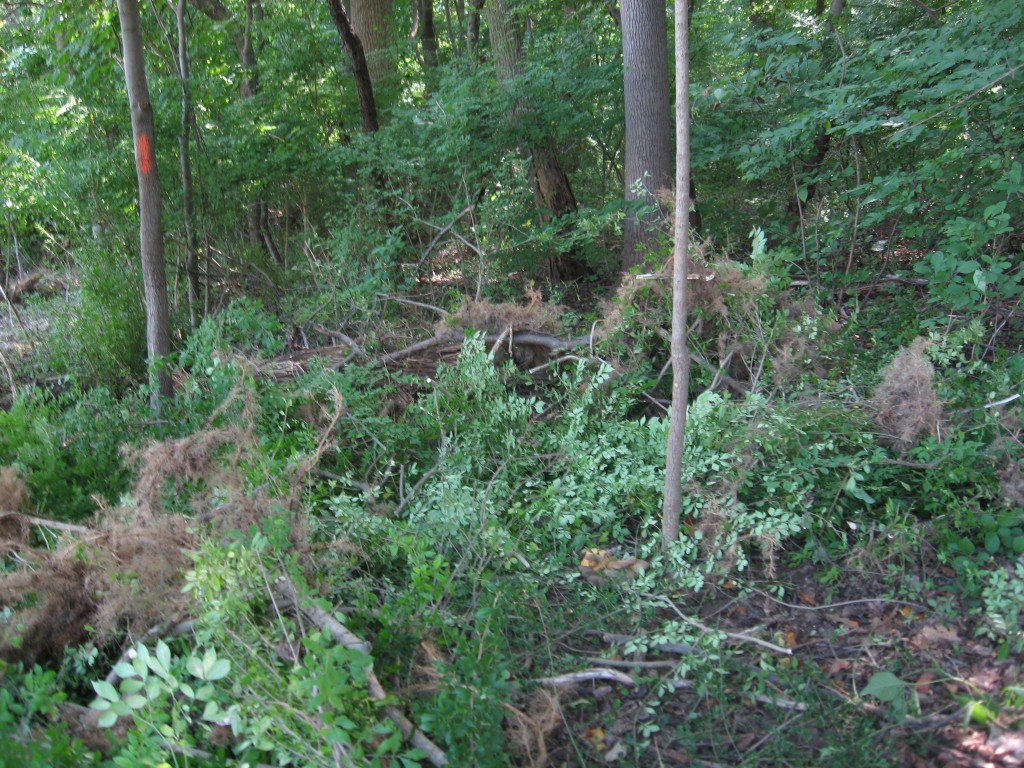
If you choose the pull-it-all-out method, be aware of the roots of native plants, and make an effort to put them all back with an inch or so of soil put back on top. Cover the area back up with leaves, so it looks as if there never was a bush there in the first place. The idea is to make as few changes as possible to the forest ecosystem. The best job is the one that looks as if there was no work done in the first place.
What to do with the Bush after it is removed? Â We leave the bush on the site, cut up and scattered about, the roots hung up on old branches, not touching the bare soil. Very rarely will a pulled-out bush reattach itself to the soil and re-grow. It may look a bit ugly at a first glance, but within a few short years the site will look like a healthy forest again, and the Burning bush will have decomposed into the soil, providing bio-mass for the native plants that will return. Think of what the site will look like in five years!
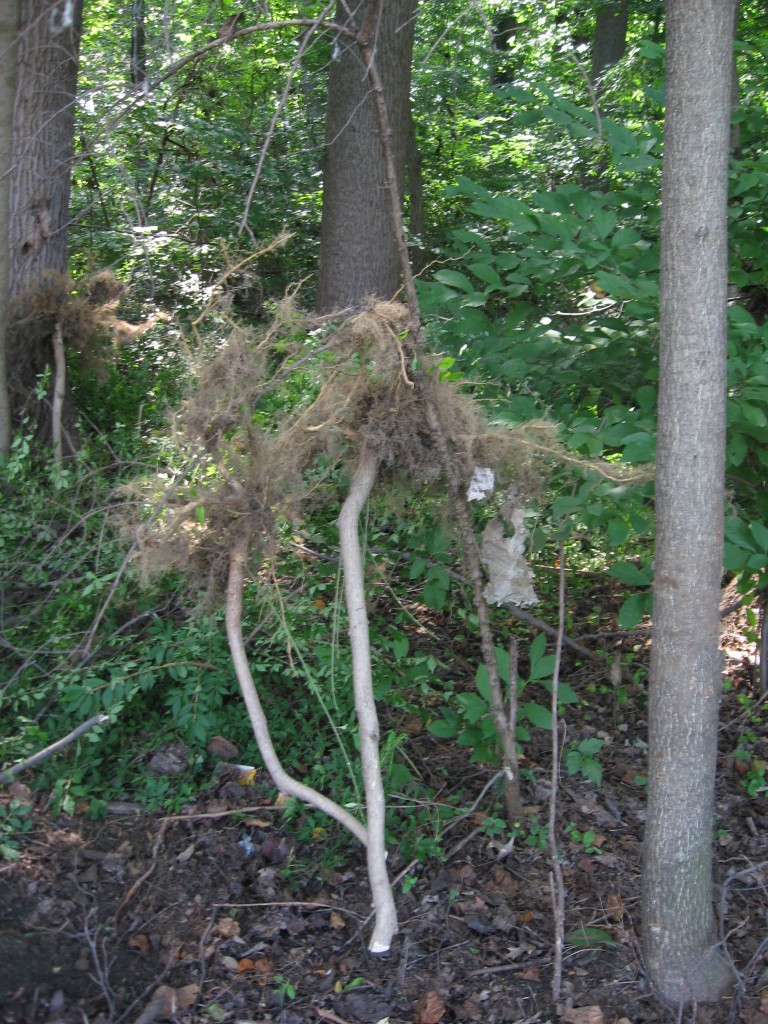
If you choose to not pull out the roots and still want to kill the bushes, consider herbicides. Â In our situation as volunteers, we are not permitted to use them, so are left with the pulling and cutting options. Consider a glysophate herbicide, with a cut-and-paint approach or basal bark application, in the late winter. Be sure to know if you are allowed to use herbicides if it is on public property.
As far as the issue of soil disturbance from pulling out the roots manually goes, this may actually be beneficial in the case of severe infestations, because it has the potential to bring to the surface long dormant seeds of native plants that will have the opportunity to sprout after the bushes have been removed.
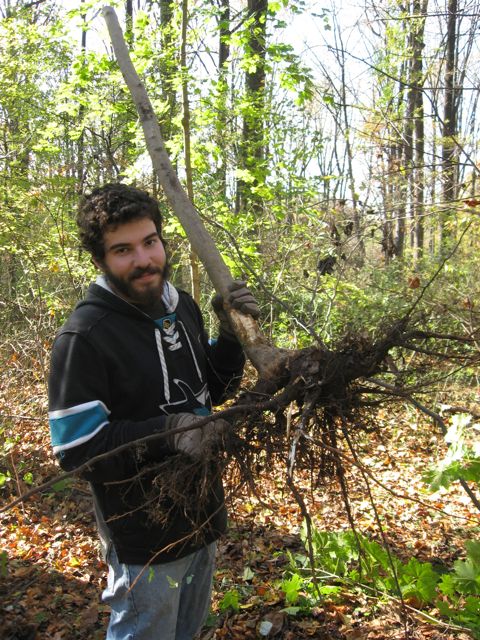
Even if your method is in need of refinement, just by addressing the problem at all is a great start to improving the forest you are adopting. As you go, you can discuss the finer points of your environmental restoration efforts with your neighbors and all those interested and engaged with the forest.
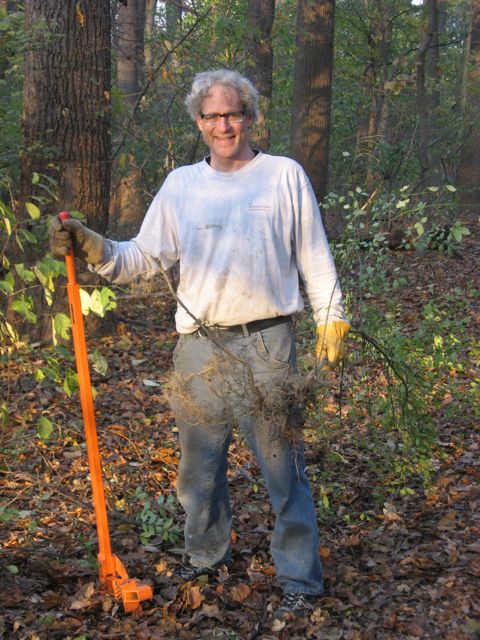
HOW TO TELL BETWEEN THE NATIVE EUONYMUS AND THE INVASIVE EUONYMUS
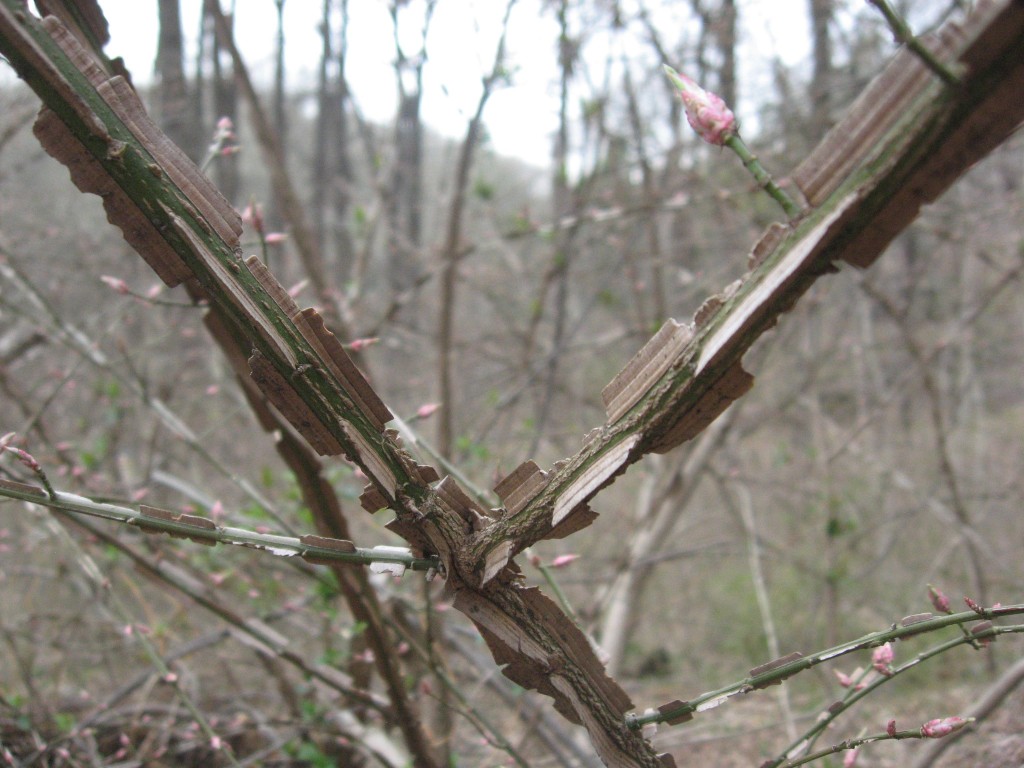
The invasive Burning Bush, (Euonymus alatus) above. Also called the Winged Euonymus. The corky, almost papery wings are very noticeable. On some specimens, the wings are not so pronounced, but they are still in evidence.
Pictured below is the native Euonymus americana, the Hearts-a-Bustin’ or Strawberry bush. While there are similarities of these two related species, the differences are distinctly noticable. The native one has  much smoother, green branches, lacking the winged habit of the invasive exotic.
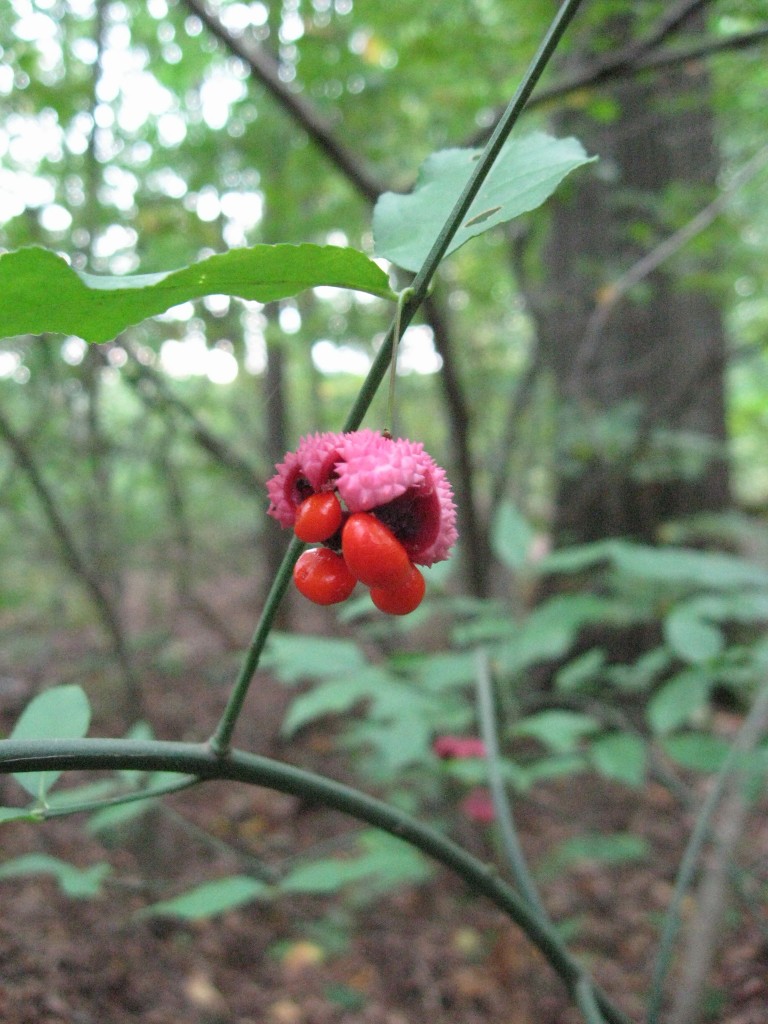
The seed production of the native one is unforgettable, the way the bright red fruit appears to burst out of the rough pink casing.
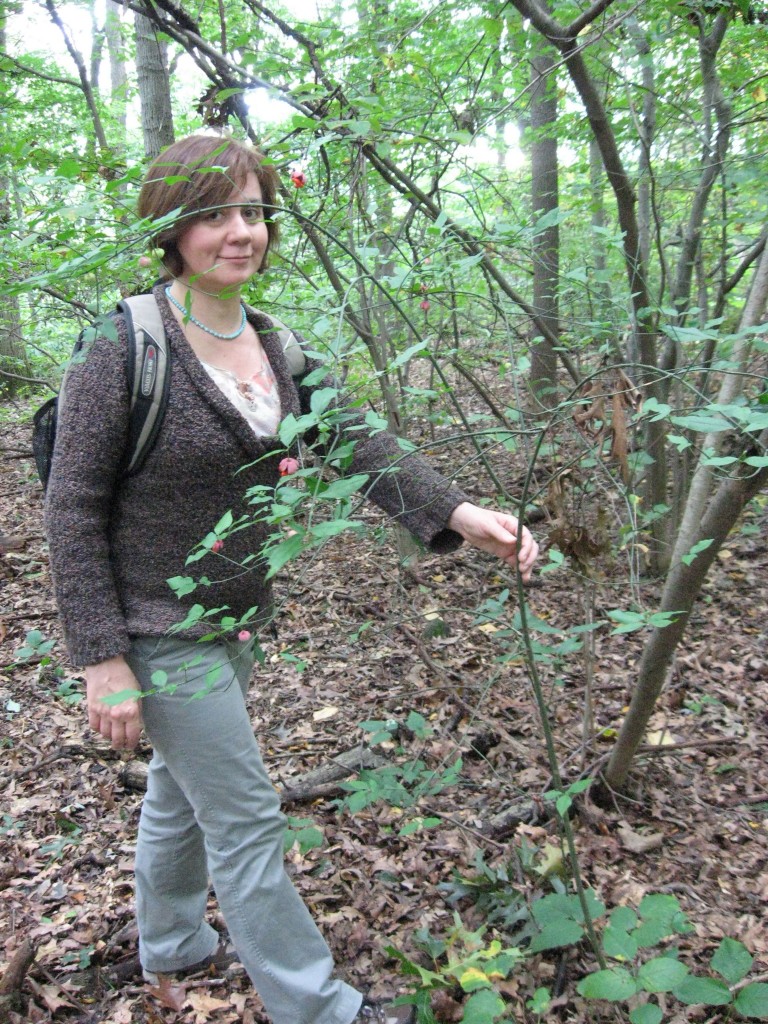
The habit of the native bush is open and airy, whereas the invasive one is denser.
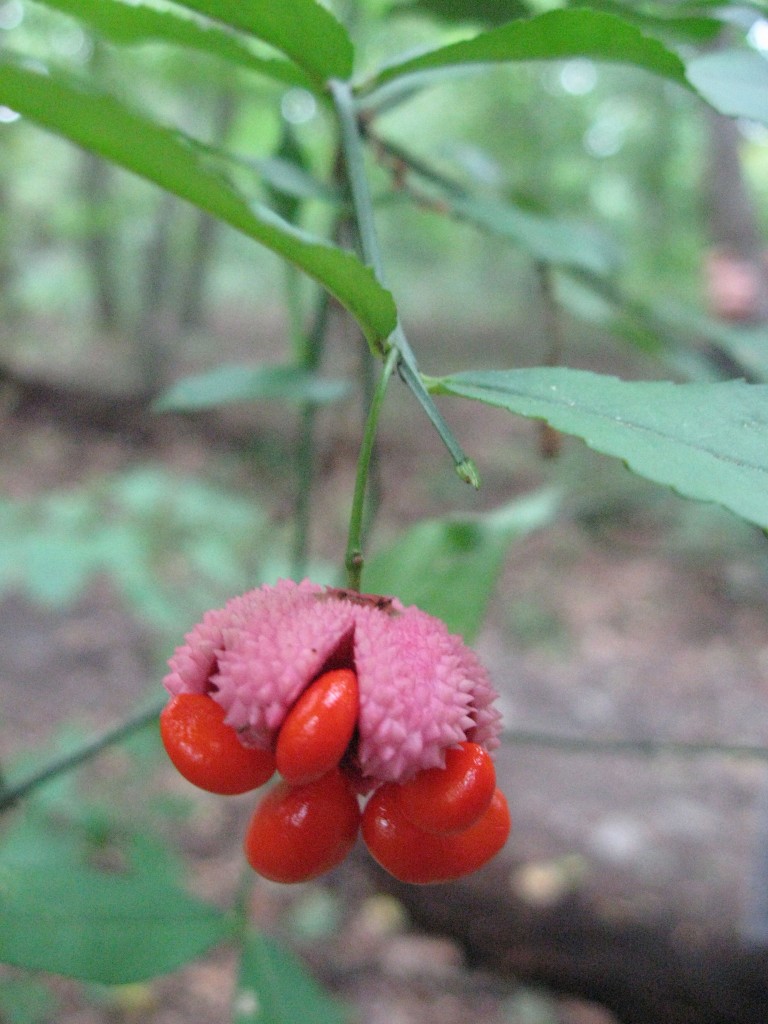
Above, the native, below the alien. Â Note the differences (pink fruit casing on the native) in the fruit, as well as the similarities. (the red berry).
If you are unsure of the status of a specimen, do not attempt to eradicate it! Native and non-native Euonymus can grow side-by-side.
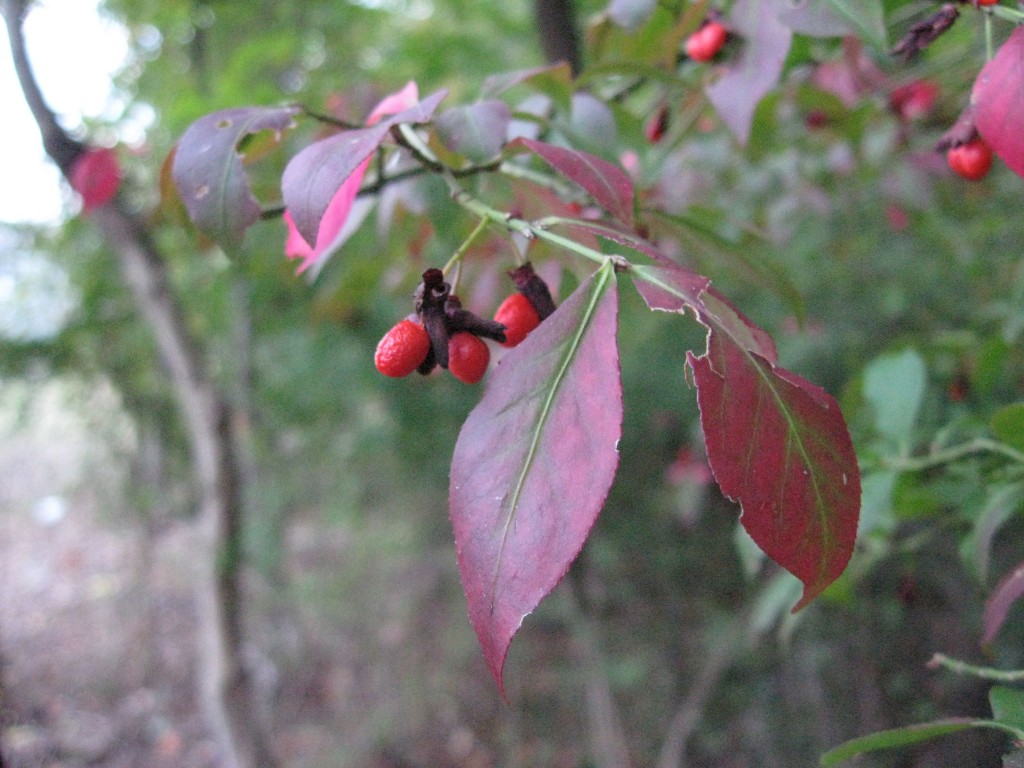
When you pull out the infestations of this bush from your adopted forest, you may be surprised to see what will grow in their place in the following years. Be prepared for numerous seedlings of the invasive alatus to pop up, that you will need to weed out, but also be ready for native surprises to emerge from a soil that has not had a late spring sun grace it in many years!
If you feel you really need to plant something as a replacement, then go ahead and purchase the native Hearts-a-bustin’ at the many native plant nurseries that offer it. Â Please let us know how your invasive removal project is going! Â Your comments and insights are much appreciated!



We just dug up 14 burning bushes from our property!! Yikes!! Should we put
The bushes thru a wood chipper?? Will the seeds re sprout if chipped?
Should we cut the roots off before chipping?
If there are seeds on it they may remain intact. I wouldn’t worry about the roots though.
This is very helpful information (especially as it addresses a way to — over time — kill the euonymous with least disturbance to the soil environment. Thank you.
Neat tool. Where do you get one?
Ours is borrowed from the City of philadelphia’s dept of Parks and Recreation. The quality is exceptional, so it loos like a professional grade tool.
Looks like the maker of the Weed Wrench has decided to stop for political reasons, but a former employee is now making something similar called the Uprooter.